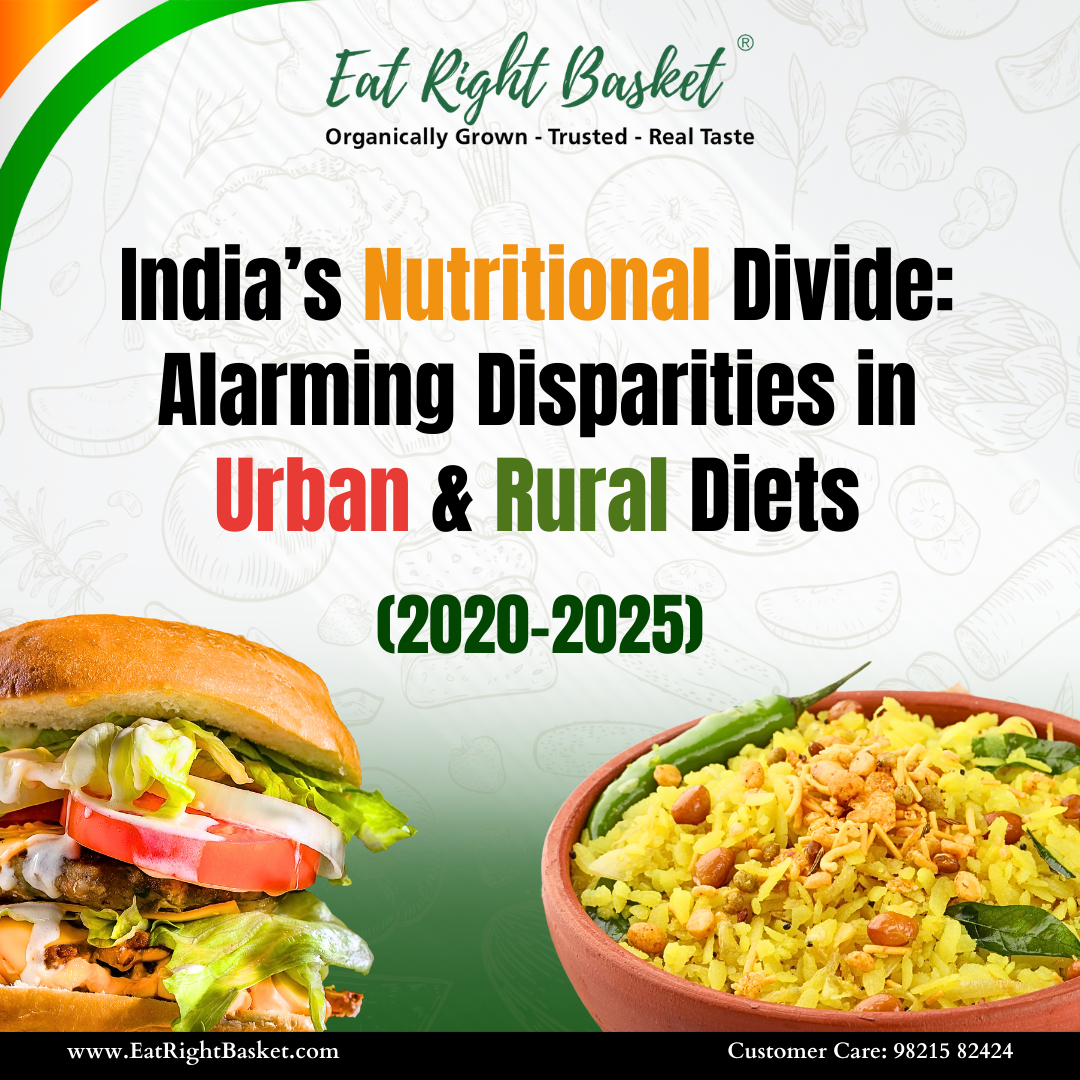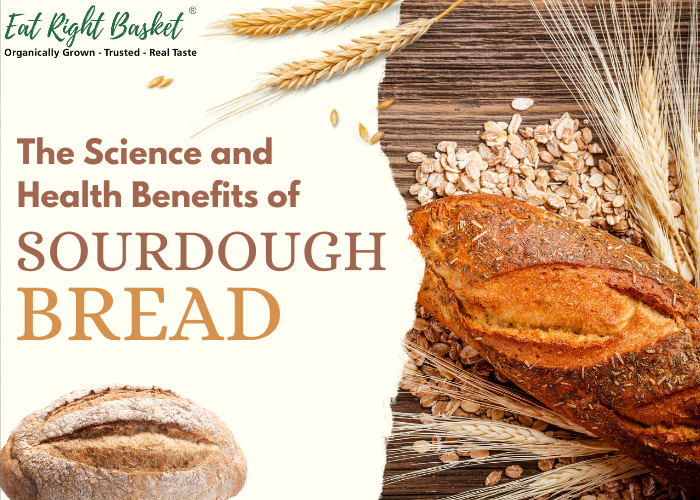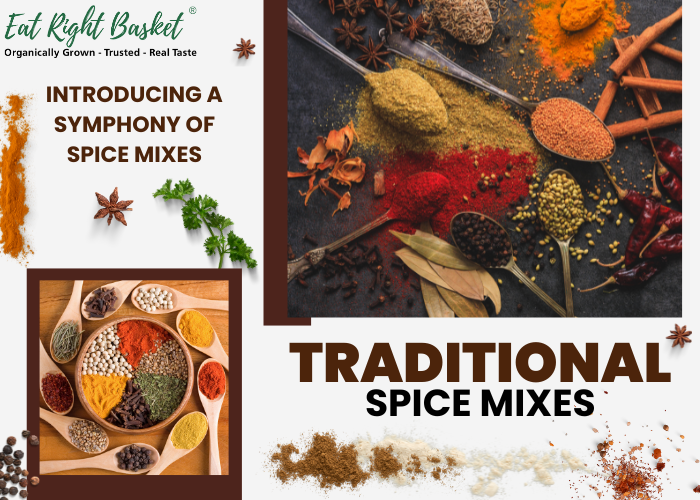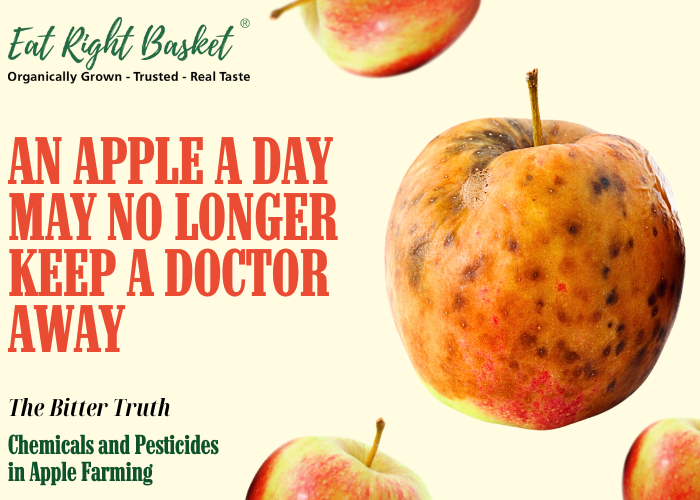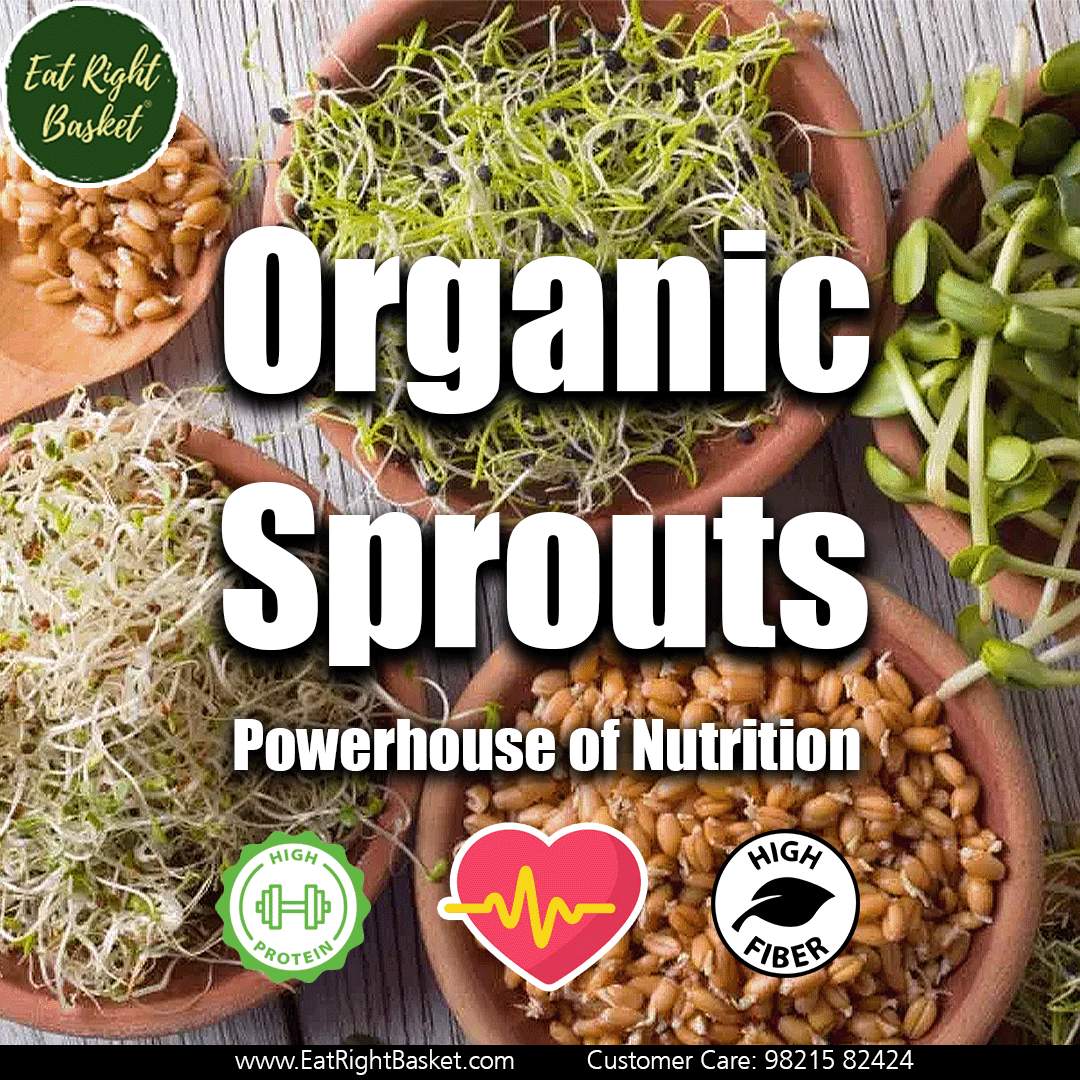India’s nutritional divide (2020-2025) shows rising obesity in cities and persistent undernutrition in villages. Explore calorie, protein, and fat intake trends across rural and urban India. When India’s Prime Minister raised concerns about rising obesity among the Indian middle class during the 79th Independence Day address, it was more than a symbolic remark, it reflected a pressing reality. Between 2020 and 2025, India’s nutritional landscape has been shaped by the lingering effects of COVID-19, persistent economic inequalities, and the impact of rapid urbanisation. Despite food security programs and a rapidly expanding market of packaged and convenience foods, the country faces a paradox: urban India struggles with overconsumption and lifestyle diseases, while rural India continues to grapple with undernutrition and micronutrient deficiencies. The picture is complicated further by data gaps, as nutrition surveys were disrupted during COVID-19, leaving researchers dependent on NSO Household Consumption Expenditure Surveys (HCES, 2022 – 24) and supplementary reports from NIN, NFHS-5, and SOFI 2025. Calorie Intake: Unequal Progress Across Rural and Urban India The NSO HCES data (2022 – 23 to 2023 – 24) shows persistent gaps in calorie intake between rural and urban India: These disparities highlight that rural diets consistently fall short of caloric adequacy, while urban diets, though adequate on average, remain deeply unequal. The gap between the lowest and highest expenditure groups narrowed slightly in 2023–24, but inequity remains entrenched. Earlier datasets reinforce this concern. NFHS-5 (2019-21) reported that 35.5% of rural children under five were stunted, reflecting chronic calorie and nutrient shortfalls. The ICMR-NIN “What India Eats” reports (urban: 2016, rural: 2012) also noted that rural diets rely heavily on cereals, which may provide calories but often lack nutritional balance. Protein Intake: Adequacy Masking Inequality Protein consumption has improved overall, but disparities remain in terms of sources and diversity: Yet, affordability restricts access. Only 8.7% of rural households and 14.3% of urban households meet the recommended levels of milk and milk product intake, highlighting barriers in achieving balanced nutrition. Pre-2022 research adds nuance: A 2022 study highlighted inadequate protein intake in rural households, not due to lack of legumes or dairy availability, but limited awareness and entrenched dietary habits. The ICMR-NIN “What India Eats” report further emphasized that cereal-heavy diets cause micronutrient deficiencies and a lack of protein diversity. Fat Intake: A Nutrition Transition in Motion Fat intake shows India’s nutrition transition most clearly: The rise in fat intake is driven by higher consumption of processed foods and edible oils, especially in cities. Urban populations are therefore facing greater risks of obesity, diabetes, and cardiovascular diseases (NCDs). Dietary behavior reflects this shift: urban middle-income households dined out 6.84 times per month in 2023-24, compared to only 4 times in 1993-94. Rural middle-income households, however, showed no such increase, underlining the stark contrast in food environments. The Dual Burden of Malnutrition India now faces the double challenge of undernutrition and overnutrition: Both regions now share elements of the dual burden: rural India continues to face hunger and deficiency, but is also experiencing rising obesity due to cheap, calorie-dense foods. Data Gaps and Policy Directions Analysis of India’s nutritional trends between 2020 and 2025 is constrained by data disruptions: Policy Recommendations To bridge these gaps, India needs to: Gather granular data → Conduct regular, state-wise nutrition surveys for better policy design. Strengthen the PDS → Diversify beyond rice and wheat to include millets, pulses, and fortified foods. Promote bio-fortified crops → Encourage millets and barley to combat deficiencies. Invest in nutrition education → Build awareness around dietary diversity and balanced intake. Conclusion: Toward Equitable Nutrition India’s nutritional divide from 2020 to 2025 underscores a complex paradox: rural India continues to battle caloric inadequacy, while urban India faces the fallout of excess consumption. Calories remain insufficient in villages, protein sources remain narrow, and fat consumption in cities is tipping diets toward chronic diseases. At Eat Right Basket, we believe that bridging this divide begins at the dining table. By choosing organic millets, pulses, cold-pressed oils, and diverse local foods, we can move closer to a future where nutrition is equitable, sustainable, and resilient for all Indians. Note:The article is written on the basis of available data focusing on key nutritional indicators: calorie, protein, and fat intake, as well as broader trends and disparities. Data prior to 2022 is less comprehensive due to limited surveys during the COVID-19 period Sources · NSO “Nutritional Intake in India” report (2022-24). · ICMR-NIN “What India Eats” report and NNMB surveys. · SOFI 2025 report. · Additional insights from NFHS-5 (2019-21) and posts on X.
Glyphosate: The Hidden Weedkiller Poison in Our Food Plate
Glyphosate is the world’s most widely used weedkiller, sprayed across millions of acres every year. Designed to destroy unwanted weeds and grass so that crops thrive, it is marketed as a farmer’s ally. But is it really that simple?The truth is darker. Glyphosate is one of the most controversial chemicals in agriculture, linked to cancer, environmental damage, and biodiversity loss. So much so that it is either banned or restricted in several countries worldwide. What is Glyphosate? Chemically, Glyphosate is a broad-spectrum, systemic herbicide and crop desiccant. Its scientific name is N-(phosphonomethyl)glycine, and it belongs to the organophosphorus compound family (phosphonates). It works by choking unwanted plants to death, ensuring only the main crop survives. While this may sound efficient, the impact goes far beyond weeds, it contaminates soil, water, air, and the food we eat. Why is Glyphosate Dangerous? The World Health Organization’s cancer agency (IARC) declared in 2015 that Glyphosate is a probable human carcinogen. Since then, debate has raged globally about its risks and regulation. Health Risks of Glyphosate Exposure: Environmental Impact: The Use in India: The Ground Reality In India, this widely used weedkiller was approved only for tea crops and non-crop areas (like pathways and fields). States like Assam, West Bengal, Tamil Nadu and Kerala, known for tea plantations, were its primary users. However, government data paints a different picture: Today, around 35 brands of such kinds of pesticides are available in India, with names like Allkill, Azad, and Gladiator, a reflection of their destructive power. Government Restrictions (2022): Despite this, this chemical remains widely available, with products like Roundup, Dhanuka Noweed Glyphosate 41% SL, and Jaikisan’s Glyphos still being sold. Where is Glyphosate Banned Globally? Many countries restrict such pesticides to protect farmers, consumers and the environment. What Can We Do as Consumers? We may not be able to control government policies, but we can control what goes on our plates. Why Organic is the Answer? The simplest way to ban such toxic chemicals from your life is to choose organic food. When farmers and consumers commit to organic, harmful chemicals automatically disappear from our farms, our soil, and our food. At Eat Right Basket, we stand for food that nourishes without poisoning. Our certified organic fruits, vegetables, staples, and snacks are 100% chemical-free, ensuring you and your family eat safe, clean, and natural. References
Safe Motherhood results from Right Food and Lifestyle
Motherhood is a profound experience that not only shapes the life of a woman but also plays a vital role in the survival and growth of humanity. The ability to carry and nurture a life within is a remarkable phenomenon that underscores the strength and resilience of mothers everywhere. Despite the beauty and joy of motherhood, many women face significant risks during pregnancy and childbirth and that was the reason why National Safe Motherhood was pitched as a special day on every 11th of April. This day is a poignant reminder of the journey of motherhood filled with love, sacrifice, and boundless strength. Why 11th of April? This day honours the birth anniversary of Kasturba Gandhi, wife of Mahatma Gandhi, and serves as a powerful tribute to her legacy of social justice and woman empowerment. National Safe Motherhood Day aims to raise awareness about access to quality healthcare, emphasizing the importance of safe motherhood for all women. By acknowledging the struggles and triumphs of mothers, we can work towards creating a world where every pregnancy leads to a healthy mother and baby. India has shown a rich history and evolving themes. Initially launched in 2003 by the White Ribbon Alliance India (WRAI), the day aimed at reducing maternal mortality and morbidity. Over the years, 11th April has focused on reducing maternal mortality and improving access to healthcare, skilled birth attendants and emergency obstetric care, importance of nutrition and anaemia control during pregnancy and role of family and community support in ensuring safe motherhood. There is a very unique dichotomy between approaches to safe motherhood in rural and urban India. Rural areas, despite having limited access to basic facilities like healthcare, sanitation, and education, often possess traditional wisdom that promotes healthy eating habits and lifestyles. In contrast, urban areas have better access to these facilities, but often lack the traditional knowledge and practices that foster healthy living. Urban dwellers are frequently exposed to fast food, sedentary lifestyles, and environmental pollution, which can lead to a higher risk of chronic diseases. According to an article published by Bangalore Mirror, incidence of PCOS (Polycystic Ovarian Syndrome) and PCOD (Polycystic Ovarian Disease) nowadays has become very high. Previously only 1 out of 10 girls were affected from this health condition but now nearly 8 out of 10 are diagnosed with either obesity or lean PCOS. https://bangaloremirror.indiatimes.com/bangalore/others/docs-report-staggering-rise-in-pcos/pcod-cases-among-teens/articleshow/117276952.cms Ms. Deepti Jain of @Nurchuringu, a nutritionist associated with Eat Right Basket, highlights a concerning trend among teenagers: the rising prevalence of Polycystic Ovary Syndrome (PCOS) and Polycystic Ovary Disorder (PCOD). These conditions not only affect physical health but also take a significant toll on the emotional and mental well-being of young girls, particularly when it comes to conceiving for pregnancy. The emotional, physical, and mental challenges associated with PCOS and PCOD can be overwhelming, making it essential to address these issues through a comprehensive approach that includes nutrition, lifestyle modifications, and emotional support. By acknowledging the complexities of these conditions, we can work towards creating a more supportive environment that empowers young girls to manage their health and well-being effectively. Ms. Jyoti Awasthi, CEO Eat Right Basket says that increasing use of pesticides and all sorts of synthetic preservatives is proving dangerous for all, especially children who, due to their higher metabolic rate, tend to absorb more pesticides than adults. Premature birth, low birth weight, and birth defects can all result from pesticide consumed through even regular food during pregnancy. More and more studies are showing that pesticides may have an impact on endocrine function, which may impact reproductive health. Ms. Kanika Rajput, Founder of @wholesoul_by_kanika, @Rajputsartisanwellness, an organization that promotes conscious and sustainable living, believes that though delivering a child is a very natural and normal process, our lifestyle and eating habits add complexity and fear in mothers. This needs to be tackled from a very early age. This day serves as a call to action, encouraging governments, healthcare providers, and communities to collaborate in ensuring safe motherhood. By sharing inspiring stories, quotes, and insights, we can foster a sense of solidarity and support for mothers worldwide. Join us in celebrating the power of motherhood and working towards a future where every mother has access to the care she deserves. In an effort to promote reproductive well-being, Eat Right Basket is organising a campaign with its expert team to raise awareness about caring for reproductive health from adolescence onwards and ensuring safe motherhood. We will capture insights from this campaign and continue to write blogposts around the subject. So do watch out for this space for very useful and interesting information that may help you in your journey to motherhood.
“Cook Right with Eat Right Basket” Contest: A Celebration of Sweet Delights
At Eat Right Basket, we’re passionate about promoting healthy and organic eating. To celebrate the spirit of cooking and creativity, we organized a cooking contest called “Cooking Right with Eat Right Basket” on February 2nd, 2025. The theme of the contest was sweet dishes, and we were overwhelmed with an incredible response from participants across Delhi and NCR. After careful consideration, our judges shortlisted six outstanding recipes that showcased creativity, innovation, and a passion for healthy cooking. In this blog, we’ll take you through each of these recipes, highlighting the main ingredients and cooking methods used. Recipe 1: Ragi Laddu The first recipe that caught our attention was Ragi Laddu, made with ragi flour, jaggery powder, ghee, almonds, cashews, edible gum, pumpkin seeds, melon seeds, and flax seeds. This traditional recipe is a perfect blend of nutrition and taste. Ingredients: Ragi flour: 250 gms, Jaggery Powder: 150 gms, Ghee: 250 gms, Almonds:50 gms, Cashews- 50 gms, Edible gum: 50 gms Pumpkin Seeds: 50 gms, Melon Seeds: 50 gms, Flax Seeds: 50 gms Cooking Instructions: 1. In a Kadhaai, take Desi Cow Ghee, once it is heated add ragi Flour. 2. Keep shallow frying it on low flame till the mixture leaves ghee and becomes of flowing consistency. 3. Now add chopped almonds, cashew, shallow fried gond (edible gum). 4. Add roasted flax seeds, pumpkin Seeds, melon seeds and mix this well. 5. Add jaggery powder, mix it well. 6. Turn down the flame but continue stirring it a bit. 7. Once this mix cools down, roll its laddus with gentle hands. Recipe 2: Hari Matar ka Halwa with Gajar ki Saunth The next recipe that impressed us was Hari Matar ka Halwa with Gajar ki Saunth. This recipe was made with peas, khoya/fresh malai/condensed milk, ghee, jaggery, dry fruits, elaichi, carrots, and ginger. This innovative recipe combines the freshness of peas with the sweetness of carrots Ingredients: Peas – 600gm (unpeeled), Khoa – 200gm, Ghee – 200gm, Sugar – 300gm, Cashew – 50gm, Almonds – 50gm, Elaichi – 10gm, Adrak – 20gm, Saunf (Fennel Seeds)- 10gm Cooking Instructions: 1. Take two table spoon desi cow ghee in a kadhai 2. Sauté peeled green peas in it on low flame till they turned slightly brown and kept aside. 3. In a pan add two teaspoons of Desi Cow Ghee and add crushed saunf (Fennel Seeds), very fine chopped ginger and crushed cardamom, then add jaggery syrup. 4. Let it boil and then simmer till the mixture thickens to a paste. 5. Put the green peas pan again on the stove. 6. Add malai (fresh cream)/ khoa to it. Mix well gently so that no lumps are formed. 7. Add the jaggery paste to this mixture and keep cooking on low flame till it turns dry, dark and cooked. 8. Sprinkle dry fruits. 9. Hari Matar ka halwa is ready to serve. Recipe 3: Chana Barfi Chana Barfi was another very interesting entry in the cooking contest. It tasted delicious and its recipe was also very unique. Made with roasted chickpeas (Bhuna Chana), almonds, cashews, white rice poha, dhage wali mishri, and milk. Another speciality of this recipe is that no ghee or oil was used in this recipe. Ingredients: Roasted chana (Bhuna Chana) 250 gm, Almond 150 gm, Cashew 150 gm, Roasted Poha 100 gm, Dhage wali Mishri 350 gm, Milk for binding (5/6 tbsp or as required) Cooking Instructions: 1. Dry roast white rice poha till it turns golden brown. 2. Dry grind roasted deskinned roasted chickpea (bhuna chana), cashew, almonds, dhaaga mishri, cardamom, and roasted white rice poha to fine powder. 3. Chop some almonds separately for layering on top. 4. Gently knead the prepared flour with help of milk till it becomes a perfect soft dough. 5. Transfer the dough into a square box, spread even, and leave it for setting. 6. Spread chopped almonds on the top. 7. Cut Burfi of the desired size. 8. Chana Burfi is Ready to serve. Recipe 4: Gajar Ka Halwa (Vegan) The contest also saw a vegan sweet dish made without the use of ghee or milk – Gajar Ka Halwa (Vegan), made with carrots, coconut, raisins, cashews, almonds, seeds, and jaggery. This vegan recipe is a perfect dessert option for those who have lactose intolerance or are vegan by choice. Others may also have it as its highly nutritious and tastes different from the regular Gajar ka Halva. Ingredients: Red Carrot 1.5 kg, Fresh Coconut 1 pc, Raisins: 30 gm, Cashews 150 gms, Almonds 100 gms, Seeds 50 gms each, Jaggery 500 gms Cooking Instructions: 1. Grate carrots and steam them in a kadhai until soft (approx 15 to 20 mins on low flame). 2. Meanwhile, grind one fresh coconut, jaggery, some cashews (optional), and 4-5 cardamom in a grinder. 3. Add this mixture to grated and steamed carrots. 4. Mix everything well and cook it further for few minutes till the carrots are cooked well 5. Garnish it with seeds and nuts. Recipe 5: Whole Wheat Choco Banana Cake No sweet dish contest is complete without the entry of cakes in it. So we had Whole Wheat Choco Banana Cake, made with whole wheat flour, brown sugar, and bananas as the main ingredients. This healthy cake option is perfect for those looking for a guilt-free dessert. Ingredients: Whole Wheat flour 180 gms, Brown Sugar 130 gm, Banana 250 gms, Butter 90 gms, Vanilla Essence 1/2 tbsp, Milk 50 ml, Pumpkin Seeds 5 gm, Sunflower Seeds 5 gm, Baking Powder ¾ tsp, Baking soda ½ tsp, a pinch of Salt. Baking Instructions: 1. Mash banana in a bowl and add the brown sugar – make it into a smooth paste. 2. Sieve/whisk together – whole wheat flour, baking soda, baking powder, and a pinch of salt. 3. Mix mashed banana and brown sugar paste to the whole wheat flour mix and whisk well. 4. Add butter and vanilla extract in a separate bowl, and flour in batches with
The Science and Health Benefits of Sourdough Bread
Sourdough bread, made using a natural starter culture instead of commercial yeast, has been a staple in many traditional cuisines for centuries. This fermented bread has gained popularity in recent years due to its unique flavour, texture, and potential health benefits. In this blog, we will delve into the science behind sourdough bread and explore its health benefits. The Science of Sourdough Sourdough bread is made using a natural starter culture, which is a mixture of wild yeast and lactic acid bacteria. The starter culture ferments the sugars in the dough, producing lactic acid and creating the characteristic tangy flavour and chewy texture of sourdough bread. The fermentation process involved in making sourdough bread is slower and more complex than traditional bread making. The lactic acid bacteria in the starter culture break down some of the gluten in the dough, making it easier to digest for people with gluten sensitivity. Health Benefits of Sourdough Bread 1. Easier to Digest: The lactic acid bacteria in the starter culture break down some of the gluten in the dough, making it easier to digest for people with gluten sensitivity. 2. Higher Nutrient Content: The longer fermentation time involved in making sourdough bread increases the bioavailability of nutrients like iron, zinc, and magnesium. 3. Lower Glycemic Index: Sourdough bread has a lower glycemic index than traditional bread, meaning it digests more slowly and won’t cause a sudden spike in blood sugar levels. 4. Rich in Probiotics: Sourdough bread contains beneficial probiotic bacteria, which can help support gut health and boost the immune system. 5. Antioxidant Properties: Sourdough bread contains antioxidants, which can help protect the body against free radicals and oxidative stress. Conclusion Sourdough bread is a nutritious and delicious alternative to traditional bread. With its unique flavor, texture, and potential health benefits, it’s no wonder why sourdough bread has gained popularity in recent years. By understanding the science behind sourdough bread and following some simple tips, you can create your own delicious and healthy sourdough bread at home. At Eat Right Basket we have partnered with Earthy Grains, an artisan bakery who have mastered the craft of sourdough bread making. You can find a wide range of Earthy Grain breads here like roasted Garlic Sourdough, Seeded Gluten-free Bread, Jowar Buns, Jowar Pao, Vegan Banana bread, Eggless Marble Cake, Muesli Sourdough, Multigrain Tin Loaf etc. Enjoy your bread with gratitude to this craft of breadmaking. References 1. “Sourdough Bread: A Review of Its History, Production, and Nutritional Value” (Journal of Food Science, 2018) 2. “The Science of Sourdough” (The Guardian, 2019) 3. “Sourdough Bread: A Potential Tool for Improving Gluten Tolerance” (Journal of Agricultural and Food Chemistry, 2019) 4. “The Health Benefits of Sourdough Bread” (Healthline, 2020)
Traditional Spice Mixes for Home Cooked Right Food
“Kos kos par paani badle, Aatth kos par bani/ bees kos par pagdi badle, tees kos par dhani”– (Bhartendu Harischandra) India with 28 states and 8 Union territories is blessed with diverse culture, languages and food reflecting the rich history of various regions and cultures. Eat Right Basket is making efforts to bring this variety of tradition and taste to your kitchen with our range of ready to use spice mixes that bring a rainbow of tastes and flavours to your kitchen. Introducing to you this symphony of spice mixes that can help you create diversity and make your family enjoy home cooked food the most – Masalebhat: Adding Masalebhat to your food is an age old art of eating simple and good food. Traditionally, Masalebhath is used as a spice mix which is used to accompany and add taste to plain and simple boiled rice. Add dollops of desi cow ghee to plain boiled rice and mix it with Masalebhath spice mix. Eat it steaming hot and enjoy this simple yet nutritious food. Ingredients – This carefully crafted blend of premium spices includes coriander seeds, cumin seeds, mustard seeds, fenugreek seeds, fennel seeds, clove, pepper, cardamom, black cardamom, black cumin, bay leaf, cinnamon, and red chilli. Each ingredient is thoughtfully selected to bring out the authentic taste and aroma that will tantalize your taste buds. Bisibellibhat Masala: Bisibelebath is a traditional recipe of Karnataka considered to have been developed in the royal kitchen of Mysore Raja. Bisi Bele Bhath literally means – Hot Lentil Rice Dish. This is made using generous quantity of water so that it has a gooey texture and flowing consistency. Coconut is tje key ingredient in this dish and so it is main ingredient in our spice mix as well. Ingredients – Desiccated coconut, coriander seeds, cumin, red chilli, cloves, chickpea split, black gram, fenugreek seeds and coconut oil. Add seasonal veggies to this bhath dish and tamarind water to youryour taste. Add some cashew nuts while tempering to give it a royal treatment. Enjoy home made Bisi Bele Bhath and enjoy with your family. Kashmiri Masala Tikki: Masala Tikki also known as Vaer as it is known is a spice marinade commonly used in Kashmiri cuisine. It is also used in Wazwan by the Kashmiri Chefs (Waza, in Kashmiri). Vaer is an essential ingredient in Wazwan (a multi course meal prepared during wedding functions) and imparts a distinct flavor and aroma to any recipe it is added to. In Kashmiri tradition – women would prepare these Tikkis themselves as it is considered very auspicious especially during wedding festivities. They would place it in a thaali (Plate) as Vaaer Zung along with rice, a packet of salt and some cash and hand this over as a mark of respect to the head cook or Waaza as soon as he starts cooking for the feast. This Masala tikki or Vaaer reflects and represents the essence of Kashmiri cuisine. It is made of a measured combination of spices like clove, jeera, red chilly powder, saunf powder, saunth powder, Methraa (Fenugreek seeds), a pinch of Turmeric, Garam Masala, Heeng (Asafoetida) and Rohunn (Garlic) essentially. This Masala Tikki is also particularly liked by those who do not prefer pungent Garlic flavour in their food, yet would love to have it because of its taste and medicinal property. In the fast moving life of urban families, this masala tikki comes very handy for the ones who cook. Without much ado you can make delicious feast for your friends and family, eat home cooked food and enjoy. Chaat Masala: Chaat is one of the most popular snacks of India. Different cities serve this traditional and unique delicacy in their own favourite style and combination, for eg. – Tomato Chat of Varanasi, Matar Chat of Lucknow, Papdi chaat of Agra, Ragda Patties of Mumbai, Amrood Chat of Kolkata, Sev Puri, Bhel puri in Mumbai etc Chaat Masala enhance the taste of the food served. Our Chaat masala is a perfect blend of Black salt, Coriander, Cumin, Black Pepper, Fennel, Mace, Asafoetida, Mint Powder, Carom seeds and Amchoor. With its choice of spices used, Chaat Masala is helpful in digestion. Sprinkle some on any combination of cut fruits/ boiled potatoes/ Salad bowl and enjoy a healthy meal. Little bit of imagination and your kids will come running to their food plate. Sambhar Masala: Sambar is one of the most famous, traditional and healthy staple dish of all the states in south India. This is a carefully chosen mix of lentils and vegetables that provides a complete solution for a healthy and nutritious diet. It is served along with Idli, Rice, Dosa, Iddiyappam, Vada and so many accompaniments. Our Sambar Masala is prepared by a traditional kitchen and it stands apart from all the available run of the mill masalas. The key ingredients are – Chana daal, Urad daal, Tur Daal, Coriander Seeds, Cumin Seeds, Mustard Seeds, Fenugreek Seeds, Red chillies, Curry Leaves, Turmeric Stick, Asafoetida, Black Pepper. Prepare your own Millet Idli Sambhar combo at home using Millet Idli/ Dosa Batter (ready to use) and Sambar Powder available at Eat Right Basket and enjoy a sumptuous meal with your family. Sabji Masala: Sabji, is a term used for preparing dry veggies in a mix of spices (particular to any region in India). Sabji or Sabzi as it is known is normally paired with chapatti or eaten in combination with any Daal and /rice. This is normally the staple food more popular in north India. Our Sabji Masala is a perfect combination of spices like- coriander seeds, turmeric, cumin seeds, clove, kashmiri red chilli, dry Mango powder, cinnamon, asafoetida, nutmeg, dry ginger, green cardamom, onion powder and black pepper, a perfect combination of various main and side spices. Use this single masala mix to prepare your veggies dish without much botheration and enjoy good food at home. Khichdi Masala: Khichdi is a nutritional superstar which is light and easy to digest Indian dish made
The Bitter Truth: Chemicals and Pesticides in Apple Farming
The famous saying – “An Apple a day Keeps the Doctor Away” – does not hold true anymore. Apples, a staple fruit in many Indian households, conceal a disturbing reality. In the pursuit of producing a shining, well rounded, thick skinned perfect Apple, orchards have resorted to heavy chemical and pesticide use in apple farming, Mindless of the fact that it is causing a health hazard to humans, environment and all living beings dependant on the orchard ecosystem. Chemicals and Pesticides: A Toxic Cocktail Commercial apple farming in India employs: 1. Insecticides: Chlorpyrifos, neonicotinoids, and pyrethroids to combat pests. 2. Fungicides: Chlorothalonil and Captan to prevent disease. 3. Herbicides: Glyphosate and 2,4-D for weed control. 4. Growth regulators: Hormones to enhance growth and color. Indian research reveals alarming facts: – ICMR study (2020): 70% of apple samples from Himachal Pradesh, Jammu and Kashmir, and Uttarakhand contained pesticide residues exceeding safe limits. – CSE report (2019): Indian apples contain higher pesticide residues than global standards. – IIT-Delhi research (2018): Chlorpyrifos, a commonly used insecticide, contaminates 90% of apple samples. Health Impacts Exposure to these chemicals has devastating consequences: – Cancer risk: Exposure to chlorpyrifos, glyphosate, and 2,4-D increases cancer risk. – Neurological damage: Chlorpyrifos and neonicotinoids harm brain development and function. – Reproductive issues: Exposure to pesticides affects fertility and fetal development. – Environmental harm: Chemical runoff contaminates waterways, harming aquatic life. The Residue Remains Apples retain pesticide residues, even after washing: – FSSAI findings: 55% of apple samples contained pesticide residues. Choose Healthier Options Mitigate exposure: 1. Buy organic: Opt for certified organic apples. 2. Local and seasonal: Support local farmers using integrated pest management. 3. Wash thoroughly: Use vinegar or baking soda to remove residues. 4. Peel: Remove skins to reduce pesticide intake. However this trick actually takes away a lot of fibre and minerals that are very useful for our body and digestion. DEMAND CHANGE Join the movement: 1. Advocate for sustainable agriculture: Support eco-friendly farming practices. 2. Encourage policy reform: Push for stricter pesticide regulations. 3. Educate others: Share the risks associated with chemical-laden apples. Protect your health and the environment. Choose organic, locally sourced apples and demand a toxic-free future. Information is sourced from following resources:: – Indian Council of Medical Research (ICMR) – Centre for Science and Environment (CSE) – Indian Institute of Technology Delhi (IIT-Delhi) – Food Safety and Standards Authority of India (FSSAI) – Environmental Working Group (EWG) – Pesticide Action Network (PAN) – USDA Pesticide Data Program Take action: Share your concerns and promote sustainable agriculture practices!
World Rose Day: Embracing Hope and Wellness for Cancer Survivors
22nd September is observed as World Rose Day, a poignant reminder of the resilience and courage of cancer patients worldwide. As we show solidarity with those affected, let’s delve into the status of cancer globally and explore crucial factors influencing its prevalence. Cancer Worldwide: An Alarming Reality Cancer claims over 10 million lives annually, with 18 million new cases reported in 2020 alone (WHO). The disease disproportionately affects low- and middle-income countries, accounting for 65% of cancer deaths. The most common types – breast, lung, colon, prostate, and skin cancer – underscore the need for comprehensive prevention strategies. The Hidden Dangers: Chemicals and Pesticides Exposure to harmful chemicals and pesticides significantly contributes to escalating number of cancer incidences: 1. Pesticide residues: Direct and indirect exposure to pesticide and weedicide contaminated food and water increase cancer risk, especially for agricultural workers and communities. 2. Synthetic fertilizers: Chemical runoff in soil and water harms human health and the environment including all living beings dependant on these resources. 3. Toxic household products: Chemical-laden cleaning supplies and personal care items exacerbate this exposure in many ways. Transforming to Organic and chemical free lifestyle: A Preventive Approach Adopting organic food choices and lifestyle habits can mitigate cancer risk: 1. Phytochemicals: Organic produce rich in antioxidants and fiber helps combat cancer cells. 2. Lower pesticide exposure: Organic farming methods reduce residue levels, safeguarding consumer health. 3. Healthy soil, healthy people: Sustainable agriculture promotes ecosystem balance and well-being for all living beings and nature. What can we do: On World Rose Day, let’s reaffirm our commitment to cancer prevention: 1. Choose organic: Prioritize locally sourced, chemical-free produce. 2. Support sustainable agriculture: Encourage eco-friendly farming practices. 3. Raise awareness: Educate others on cancer prevention through lifestyle changes. 4. Empathize and support: Offer love, care, and resources to cancer survivors and their families. As we honour the strength of cancer patients, let’s collectively strive for a healthier, chemical-free world. By embracing organic living and advocating for change, we can reduce cancer’s devastating impact. Resources: – World Health Organization (WHO) – International Agency for Research on Cancer (IARC) – Organic Farming Association (OFA) Share your thoughts: How do you promote cancer prevention in your daily life? Let’s inspire positive change together!
Monsoon Wellness: The Health Benefits of Organic Sprouts from Eat Right Basket
In the verdant embrace of the monsoon season, when the sky showers its bounty, it’s the perfect time to welcome the wonders of organic sprouts into our diets. Harnessing the power of these tiny, nutrition-packed dynamos, Eat Right Basket (ERB) offers a range of organic sprouts that can do wonders for your health, especially during this rainy season. Organic sprouts are essentially seeds that have germinated and become very young plants. This germination process usually begins with the seeds being soaked for several hours. The soaked seeds are then exposed to the right combination of temperature and moisture, and they begin to grow. ERB ensures that their sprouts are grown in a completely organic environment, free from harmful pesticides, which can substantially increase their nutritional value. One of the primary benefits of ERB’s organic sprouts is their dense nutritional profile. They are packed with vitamins, minerals, antioxidants, enzymes, and fiber. Sprouts are a powerhouse of nutrients, including Vitamin K, C, fiber, and folate. They also contain lesser-known nutrients like sulforaphane, which has been linked to several health benefits. Monsoon season often brings with it a higher risk of infections and diseases. Organic sprouts can help to boost our immunity, making us better equipped to ward off monsoon-related ailments. The high vitamin C content in sprouts strengthens the immune system, while their richness in antioxidants reduces inflammation and helps the body to repair itself. In addition to boosting our immunity, ERB’s sprouts are ideal for maintaining digestive health. With the onset of the rainy season, digestive problems are quite common. Sprouts, being rich in enzymes and fiber, aid in digestion, ensuring your gut stays healthy and happy. Another compelling reason to include ERB’s sprouts in your diet is their potential to aid in weight management. Sprouts are a low-calorie food with high fiber content, which makes you feel full for longer periods, reducing overeating and snacking, and helping you to maintain or lose weight. While the health benefits of sprouts are manifold, it’s essential to ensure that they are fresh and properly handled to avoid bacterial contamination. This is where ERB stands out. Their stringent quality control measures ensure the highest standards of safety and hygiene in the production, packaging, and delivery of their sprouts. Moreover, ERB understands that eating healthy doesn’t mean compromising on taste. They offer a variety of sprouts including chana, moong, ragi & jowar each providing a unique flavor to cater to different taste preferences. In conclusion, the monsoon season is the perfect time to incorporate Eat Right Basket’s organic sprouts into your diet. They are a powerhouse of nutrition that can boost your immunity, aid digestion, support weight management, and more. The best part? They’re tasty and versatile, ready to be added to your salads, sandwiches, or even as a crunchy topping for your favorite dish. As the rain purifies the air and refreshes the earth, let the organic sprouts cleanse and rejuvenate your body. Celebrate this monsoon with Eat Right Basket’s sprouts, and gift yourself the wellness you deserve.

